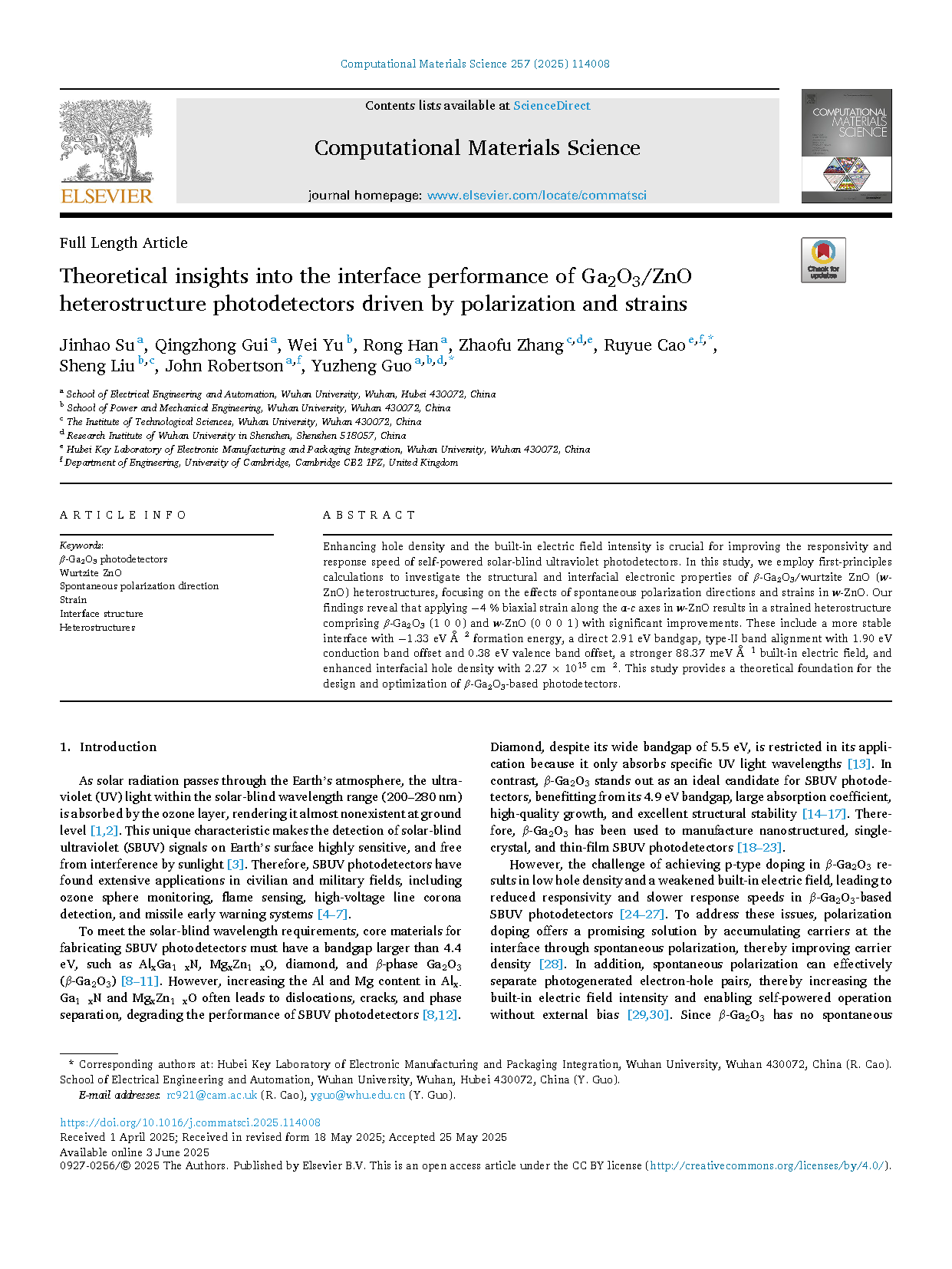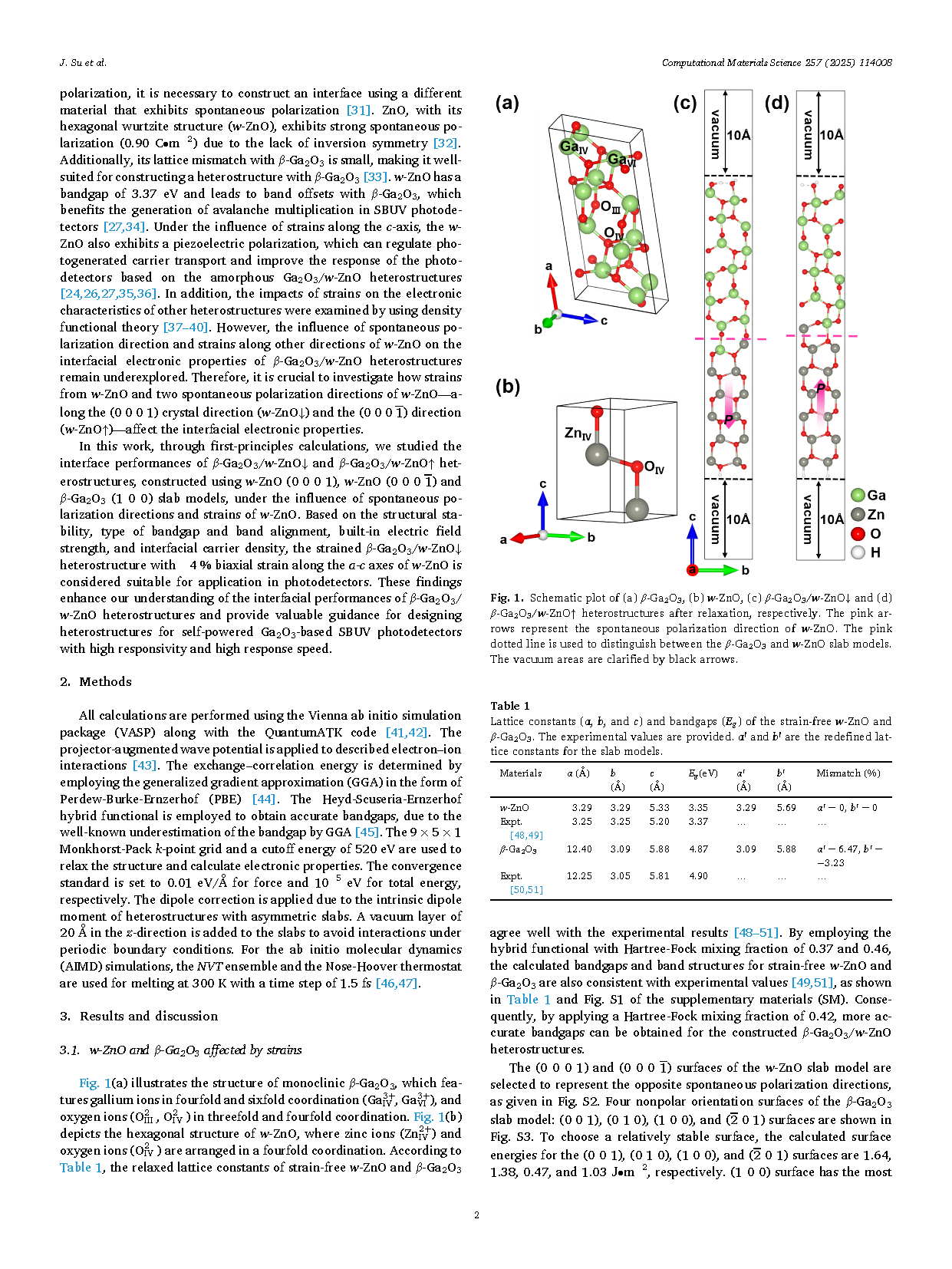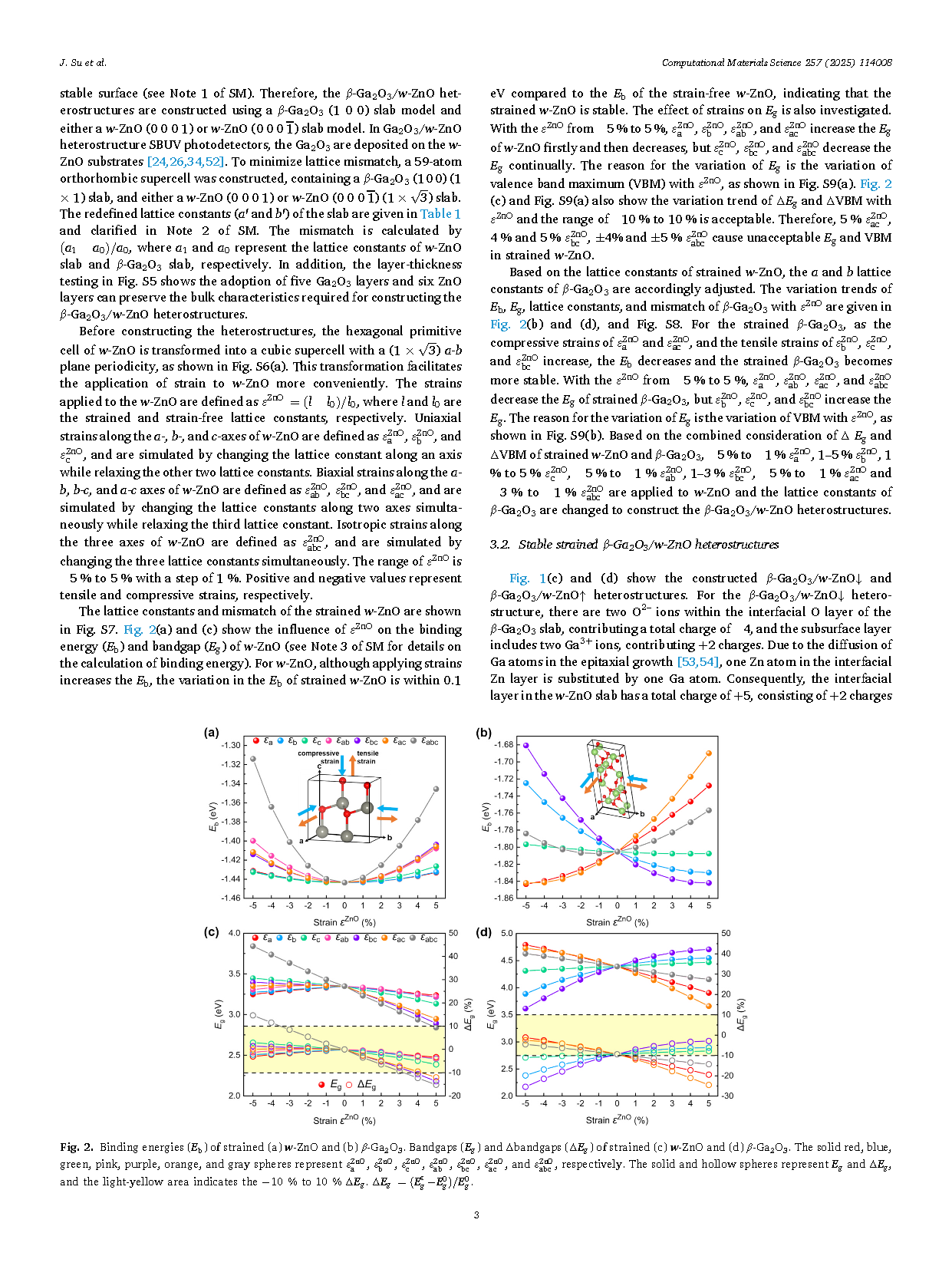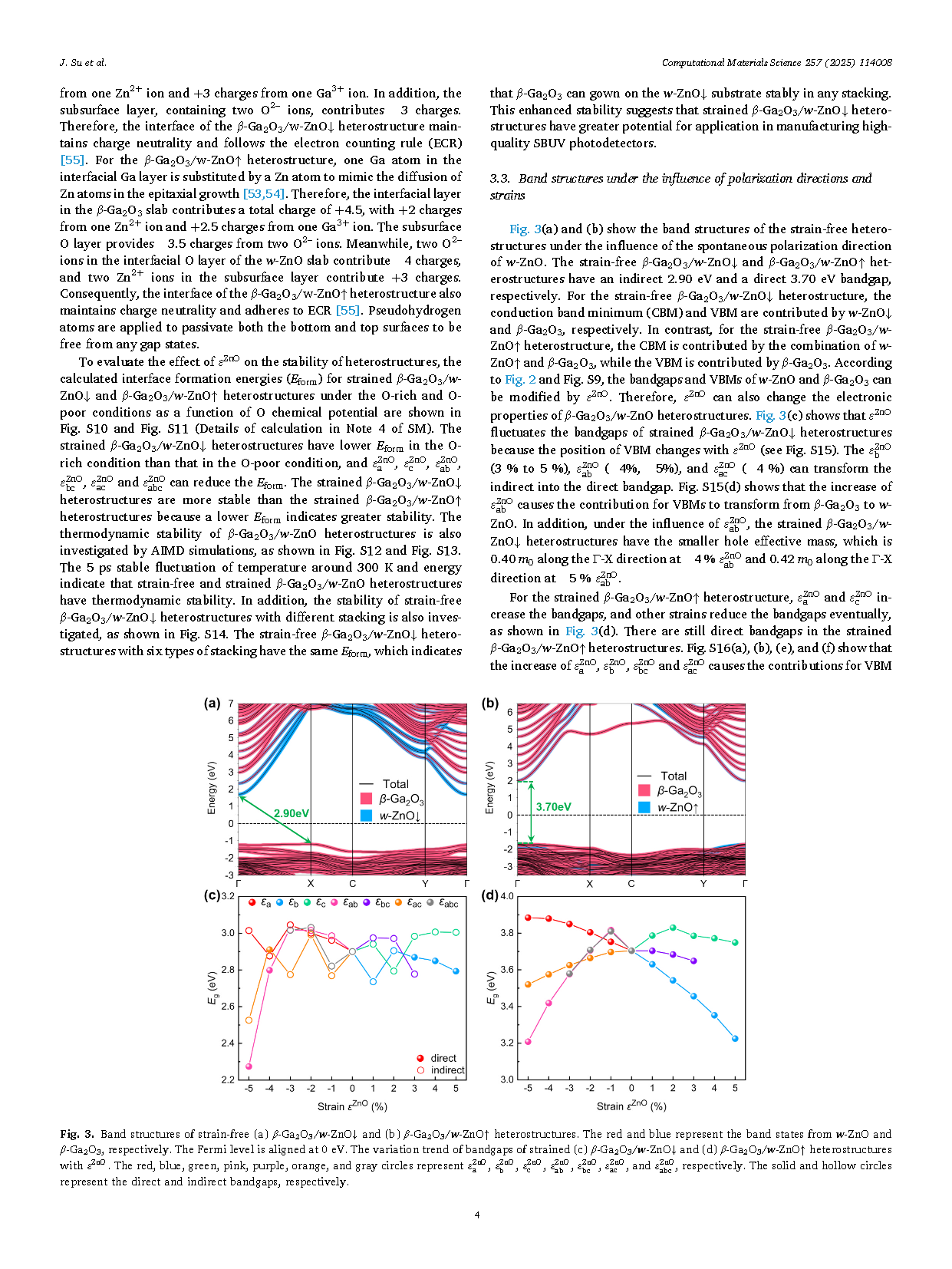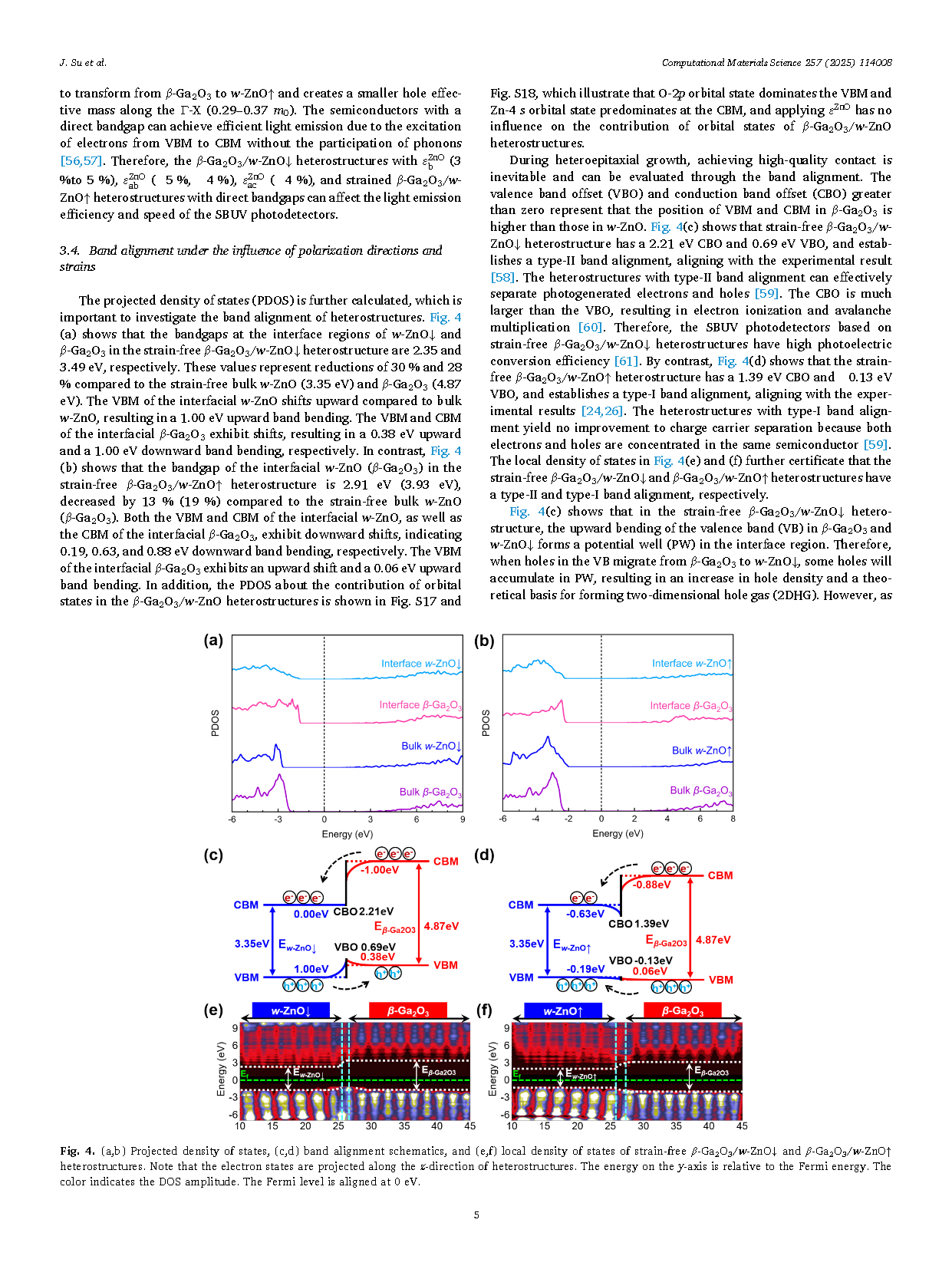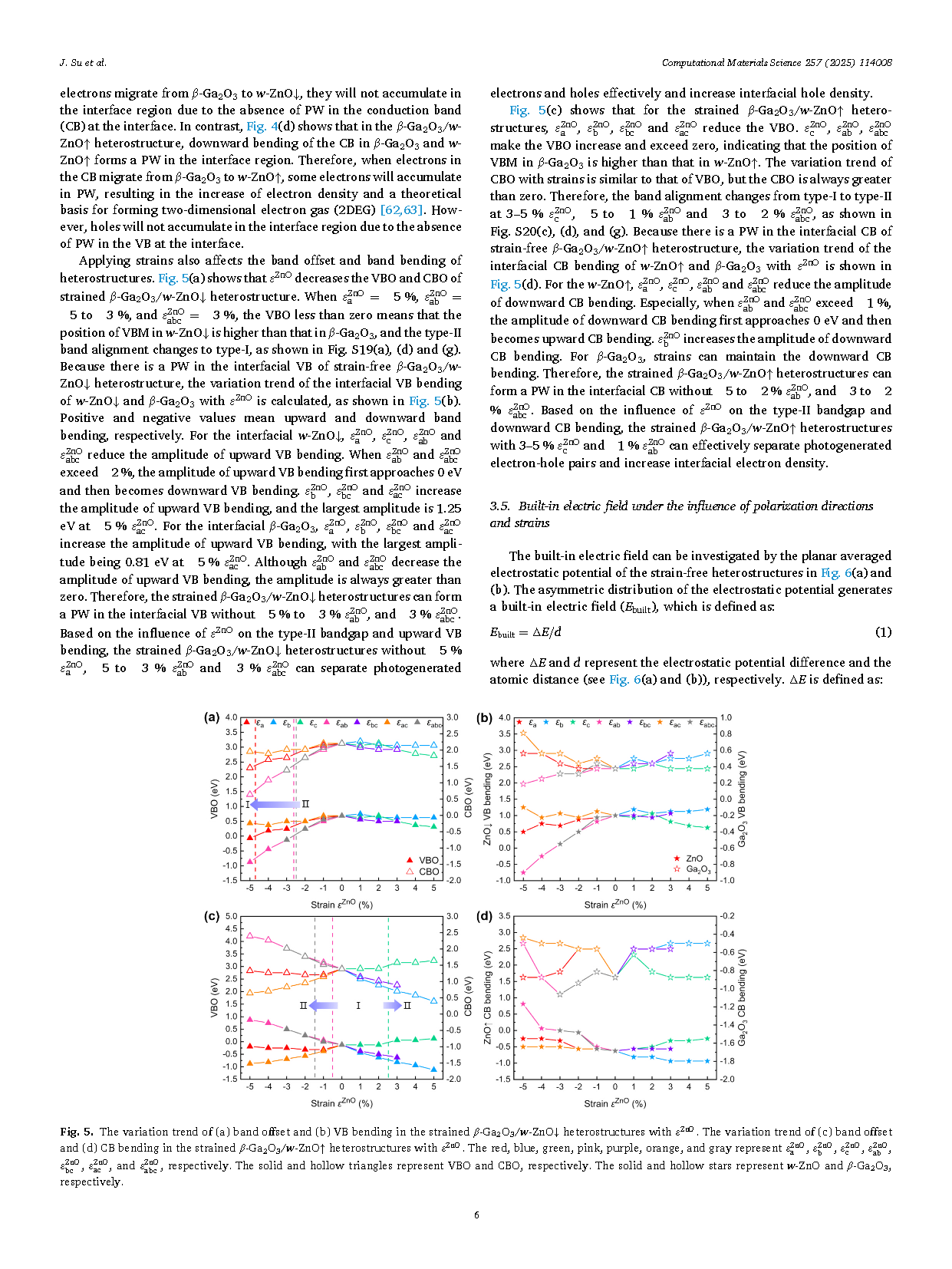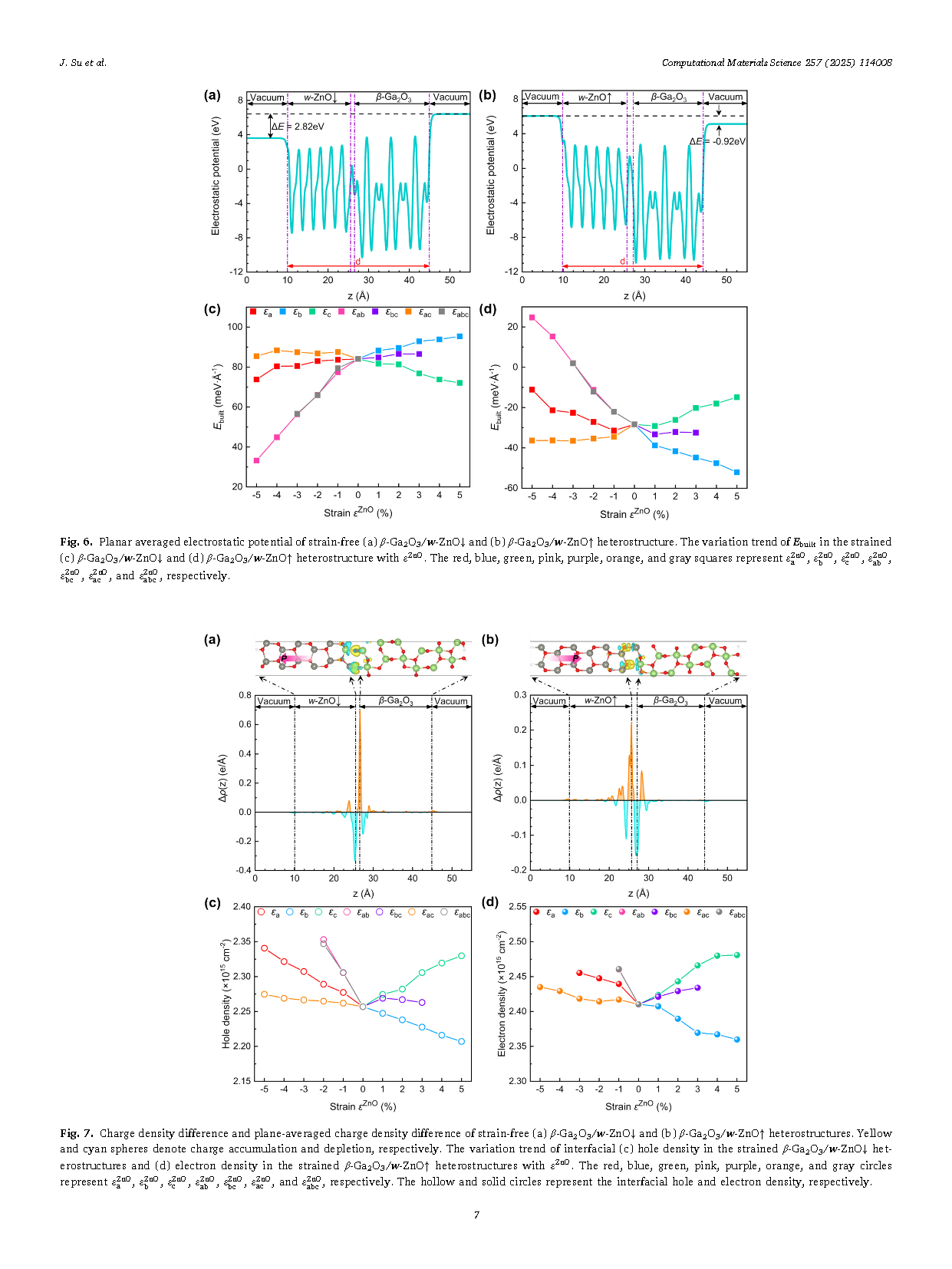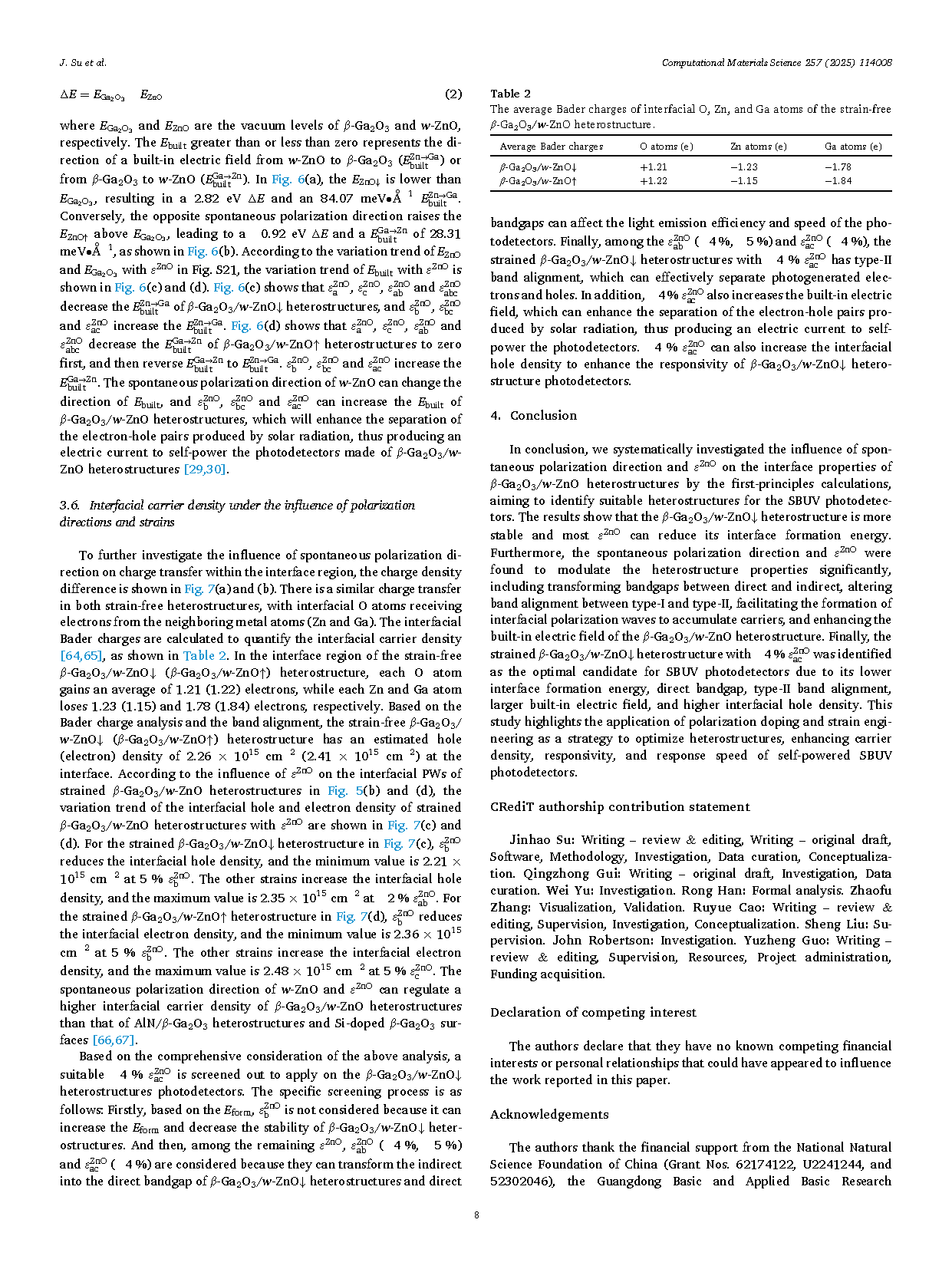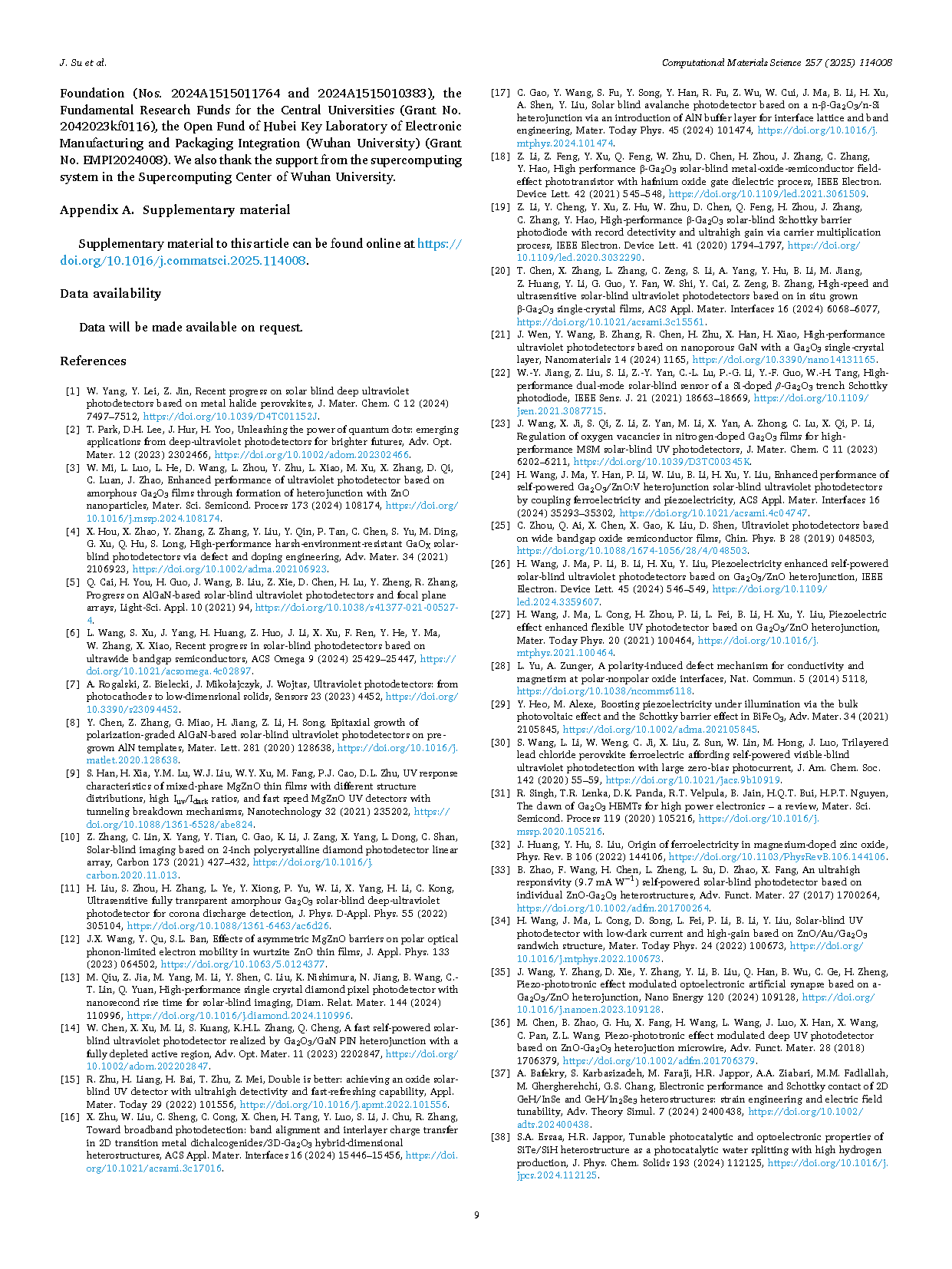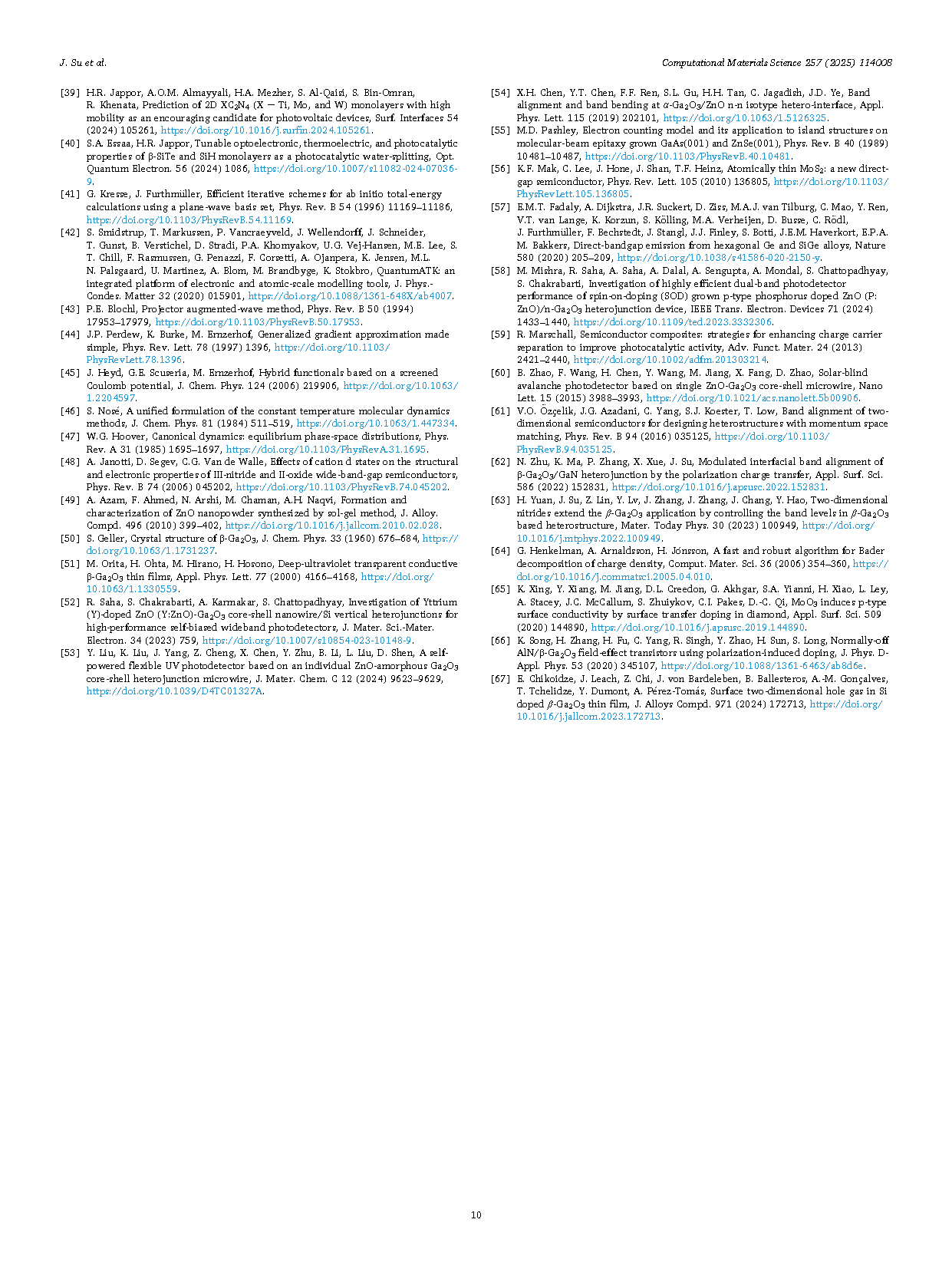
【Member Papers】Theoretical insights into the interface performance of Ga₂O₃/ZnO heterostructure photodetectors driven by polarization and strains
日期:2025-07-10阅读:263
Researchers from the Wuhan University have published a dissertation titled "Theoretical insights into the interface performance of Ga2O3/ZnO heterostructure photodetectors driven by polarization and strains" in Computational Materials Science.
Project Support
The authors thank the financial support from the National Natural Science Foundation of China (Grant Nos. 62174122, U2241244, and 52302046), the Guangdong Basic and Applied Basic Research Foundation (Nos. 2024A1515011764 and 2024A1515010383), the Fundamental Research Funds for the Central Universities (Grant No. 2042023kf0116), the Open Fund of Hubei Key Laboratory of Electronic Manufacturing and Packaging Integration (Wuhan University) (Grant No. EMPI2024008). We also thank the support from the supercomputing system in the Supercomputing Center of Wuhan University.
Background
As solar radiation passes through the Earth’s atmosphere, the ultraviolet (UV) light within the solar-blind wavelength range (200–280 nm) is absorbed by the ozone layer, rendering it almost nonexistent at ground level. This unique characteristic makes the detection of solar-blind ultraviolet (SBUV) signals on Earth’s surface highly sensitive, and free from interference by sunlight. Therefore, SBUV photodetectors have found extensive applications in civilian and military fields, including ozone sphere monitoring, flame sensing, high-voltage line corona detection, and missile early warning systems.
Abstract
Enhancing hole density and the built-in electric field intensity is crucial for improving the responsivity and response speed of self-powered solar-blind ultraviolet photodetectors. In this study, we employ first-principles calculations to investigate the structural and interfacial electronic properties of β-Ga2O3/wurtzite ZnO (w-ZnO) heterostructures, focusing on the effects of spontaneous polarization directions and strains in w-ZnO. Our findings reveal that applying −4 % biaxial strain along the a-c axes in w-ZnO results in a strained heterostructure comprising β-Ga2O3 (1 0 0) and w-ZnO (0 0 0 1) with significant improvements. These include a more stable interface with −1.33 eV Å−2 formation energy, a direct 2.91 eV bandgap, type-Ⅱ band alignment with 1.90 eV conduction band offset and 0.38 eV valence band offset, a stronger 88.37 meV Å−1 built-in electric field, and enhanced interfacial hole density with 2.27 × 1015 cm−2. This study provides a theoretical foundation for the design and optimization of β-Ga2O3-based photodetectors.
Conclusion
In conclusion, we systematically investigated the influence of spontaneous polarization direction and εZnO on the interface properties of β-Ga2O3/w-ZnO heterostructures by the first-principles calculations, aiming to identify suitable heterostructures for the SBUV photodetectors. The results show that the β-Ga2O3/w-ZnO↓ heterostructure is more stable and most εZnO can reduce its interface formation energy. Furthermore, the spontaneous polarization direction and εZnO were found to modulate the heterostructure properties significantly, including transforming bandgaps between direct and indirect, altering band alignment between type-Ⅰ and type-Ⅱ, facilitating the formation of interfacial polarization waves to accumulate carriers, and enhancing the built-in electric field of the β-Ga2O3/w-ZnO heterostructure. Finally, the strained β-Ga2O3/w-ZnO↓ heterostructure with −4 % εacZnO was identified as the optimal candidate for SBUV photodetectors due to its lower interface formation energy, direct bandgap, type-Ⅱ band alignment, larger built-in electric field, and higher interfacial hole density. This study highlights the application of polarization doping and strain engineering as a strategy to optimize heterostructures, enhancing carrier density, responsivity, and response speed of self-powered SBUV photodetectors.
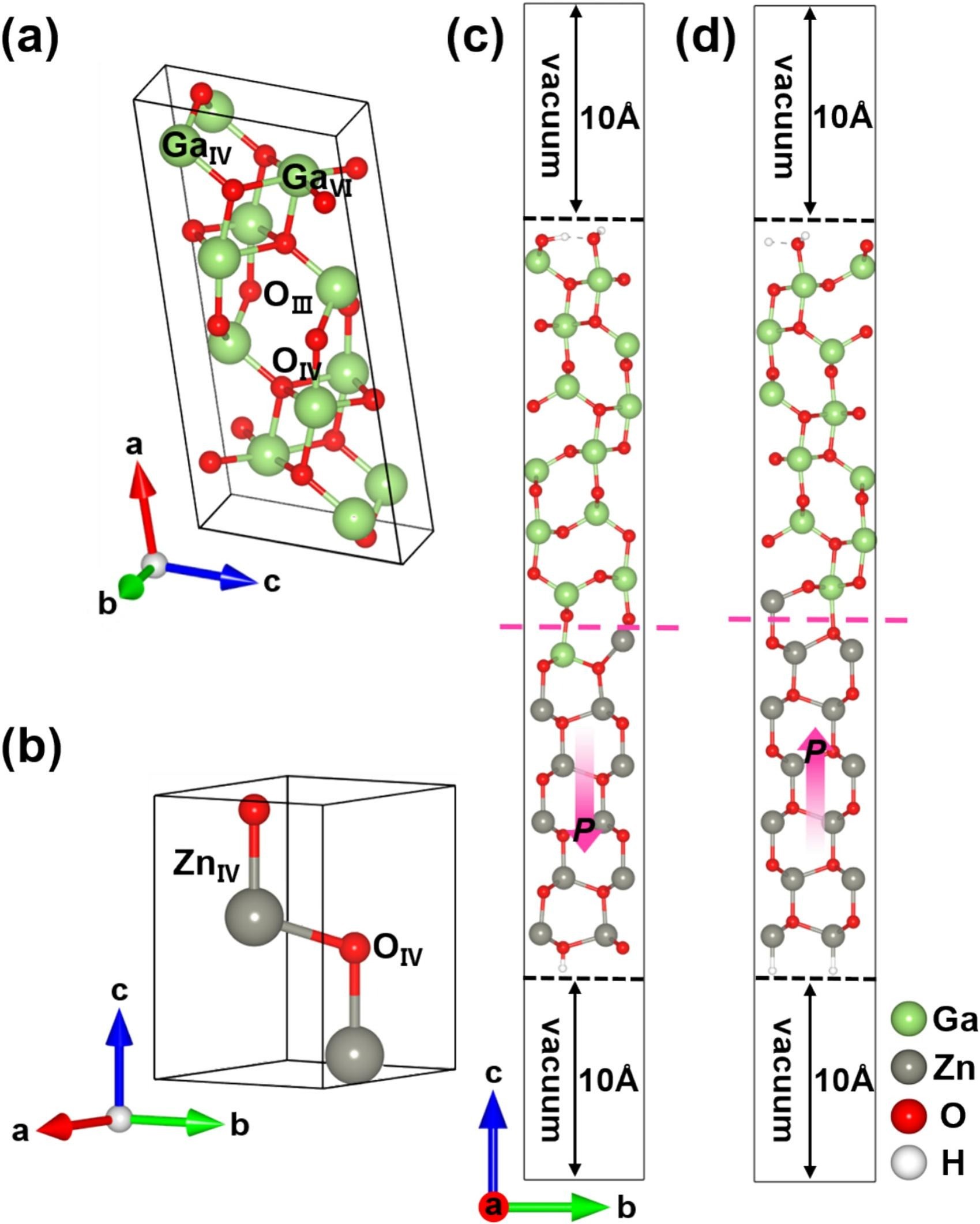
Fig. 1. Schematic plot of (a) β-Ga2O3, (b) w-ZnO, (c) β-Ga2O3/w-ZnO↓ and (d) β-Ga2O3/w-ZnO↑ heterostructures after relaxation, respectively. The pink arrows represent the spontaneous polarization direction of w-ZnO. The pink dotted line is used to distinguish between the β-Ga2O3 and w-ZnO slab models. The vacuum areas are clarified by black arrows.
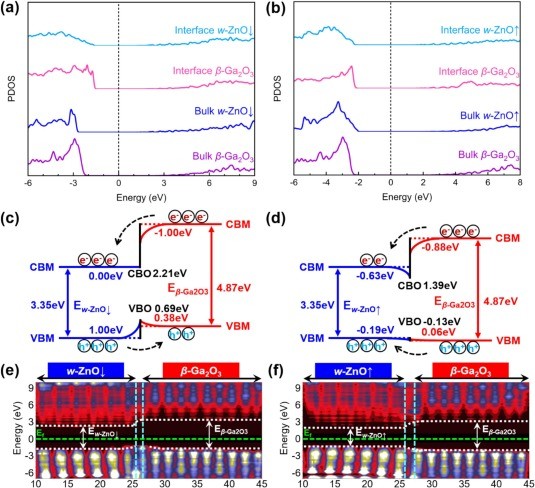
Fig. 2. (a,b) Projected density of states, (c,d) band alignment schematics, and (e,f) local density of states of strain-free β-Ga2O3/w-ZnO↓ and β-Ga2O3/w-ZnO↑ heterostructures. Note that the electron states are projected along the z-direction of heterostructures. The energy on the y-axis is relative to the Fermi energy. The color indicates the DOS amplitude. The Fermi level is aligned at 0 eV.
DOI:
doi.org/10.1016/j.commatsci.2025.114008
